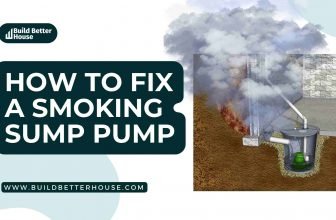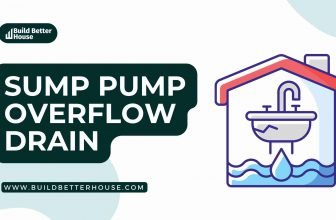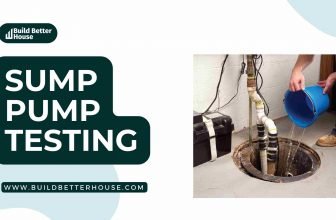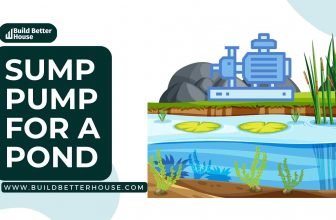Sump Pump Weep Hole Installation: Complete Step-By-Step Guide

Thanks to its silly name, a sump pump weep hole may not seem like an essential part of the system, but it can save you from a flooded basement and costly repairs resulting from air-locked pumps.
If a pump airlocks and pushes air out of the discharge pipe instead of pumping water, it will result in a flooded basement. To avoid airlock, you can drill a weep hole on your sump pump and ensure it is in the right place. This article will help you find the right location for your sump pump weep hole.
Basic Operation Of Sump Pump
A Sump Pump functions according to simple physics. A propeller on the bottom of the pump pushes water up through a pipe using a water-cooled motor. A water-cooled motor is contained in a cast-iron or stainless-steel enclosure (if properly manufactured).
Picture a plane propeller pushing air straight up; the same happens with your basement water. You pump water through a 1.5″ or 2″ PVC pipe, sending it outside your house and into your yard or storm sewer system. Sump Pumps keep your basement dry as long as they keep the water level in the basin below your floors.
Why Do Sump Pumps Need Weep Holes?
Now, we get to the tricky part. You must put a weep hole in the PVC pipe between the pump and the one-way valve. It is a 1/8″ hole drilled at an upward angle that is used to stop air bubbles from forming in the pipe.
You may be asking yourself, why will anyone drill a hole in a tube to discharge pressurized water through it?
Air bubbles in the line cause an “air lock” in the sump pump. Sump Pump weep holes prevent this by releasing air from the line.
The bubble is prevented from leaving by the water on both sides, forcing the pressure to be higher than the air pressure inside the bubble. The pump cannot pass water through the pipe because it does not have enough power.
It is similar to how a car’s brakes work. Whenever we bleed the brake lines, we ensure enough air in the line to make the brakes work. If there is too much air, it will not allow the brakes to activate. In the same way, the brake lines in the sump pump will cause an airlock.
An airlock in a basement sump pump is one of the most common reasons for a disabled pump. Fortunately, installing a sump pump weep hole prevents an airlock so you can avoid a disabled pump during the next flood.
Some sump pump models come with a weep hole preinstalled, but many from top brands require you to drill your weep hole while installing the pump. Sump pump weep holes might seem comical, but they are critical for avoiding air-locked pumps.
Drilling a weep hole into your brand-new sump pump might seem silly and easy to ruin. However, most manuals will advise placing it just above the waterline.
Where To Drill A Sump Pump Weep Hole?
Make sure the sump pump weep hole is below the check valve. The ideal location is between the check valve and the discharge of the sump.
If you’ve ensured the vertical position is correct, it’s time to check the angle at which it was drilled.
When installing sump pump weep holes, the common mistake is to drill them at an upward or horizontal angle into the pipe. The optimal angle is 45 degrees downward. This would cause water to spray out quickly.
To determine if your sump pump weep hole has been drilled at the proper angle, insert a thin stick or straw into the hole and align it with the hole’s surface. You can then measure or estimate the angle it makes with the pipe.
If the angle isn’t 45 degrees, the sump pump weep hole is probably too horizontally drilled. It can also cause water to splash out, as it is too much in line with the water’s direction.
How Big Should A Weep Hole Be?
Sump pump Weep holes should be a 3/16″ hole – any larger or smaller, and the gap will not be adequate. The most helpful way to drill a weep hole is with a power drill so you can fast (and safely) drill a straight hole.
3/16″ is the magical number for weep holes – any more significant, and the hole will not be as effective in controlling airlocks.
Once the pump is not on operational duty, you’ll have to replace the sump pump weep hole with an appropriate one. Here you have two options:
You can seal the hole up with plastic repair epoxy. This is a fast-setting epoxy putty compatible with PVC pipes. It sets quickly, so you don’t have to leave your basement unprotected by your sump pump for too long.
Alternatively, you can, of course, replace the PVC pipe entirely. Don’t forget to pay attention to the proper measurements when you do.
Wrapping Up
Installing a sump pump weep hole is simple. After you have assembled your initial sump pump and installed the PVC piping, you can make the hole (you must remove the pump from the pit for easier access). You can create a weep hole using a 3/16” drill bit.
To direct the water back down, you must drill a downward 45-degree angle weep hole six inches above the sump pump. This will divert the water that will stream out of the hole downwards.
Hopefully, this guide helps to answer your query regarding sump pump weep holes.






